I’m a big believer in cover cropping, even in a home garden. Especially in a home garden. Whereas many people simply mulch their beds in fall and call it a day, I like to grow a nutritious crop that not only improves my soil over winter but provides a delicious harvest as a bonus.
Cover crops have a lot of good things going for them. They control weeds, fix nitrogen (through a symbiotic relationship with Rhizobia bacteria), produce lots of organic matter, protect the soil from erosion, and scavenge nutrients from deeper soil layers that other crops can’t access.
Their life cycle is rather short, as cover crops are typically cut down and used (by being incorporated into the soil or left to rot in place) before they produce fruits or seeds. But that doesn’t mean you can’t graze on them in the meantime!
Here are six cover crops you can eat all year long.
Disclosure: If you shop from my article or make a purchase through one of my links, I may receive commissions on some of the products I recommend.
1. Austrian winter peas (Pisum sativum subsp. arvense)

Austrian winter peas are my absolute favorite cover crop to grow because it’s exceptionally cold-hardy (surviving down to 10°F) and it produces masses of sweet, tender greens that taste just like peas. You can harvest pea shoots every week for a fresh leafy salad and still have plenty left over to return to the soil. (A good rule of thumb is to harvest no more than a third of any cover crop.)
Austrian winter peas should be incorporated into the soil soon after they begin to flower. The roots will release nitrogen into the soil as they decompose. The flowers are also edible, and if you decide to let the plants mature for their pods, you can cut the foliage down and leave them in place to use as a mulch.
2. Fava beans (Vicia faba)
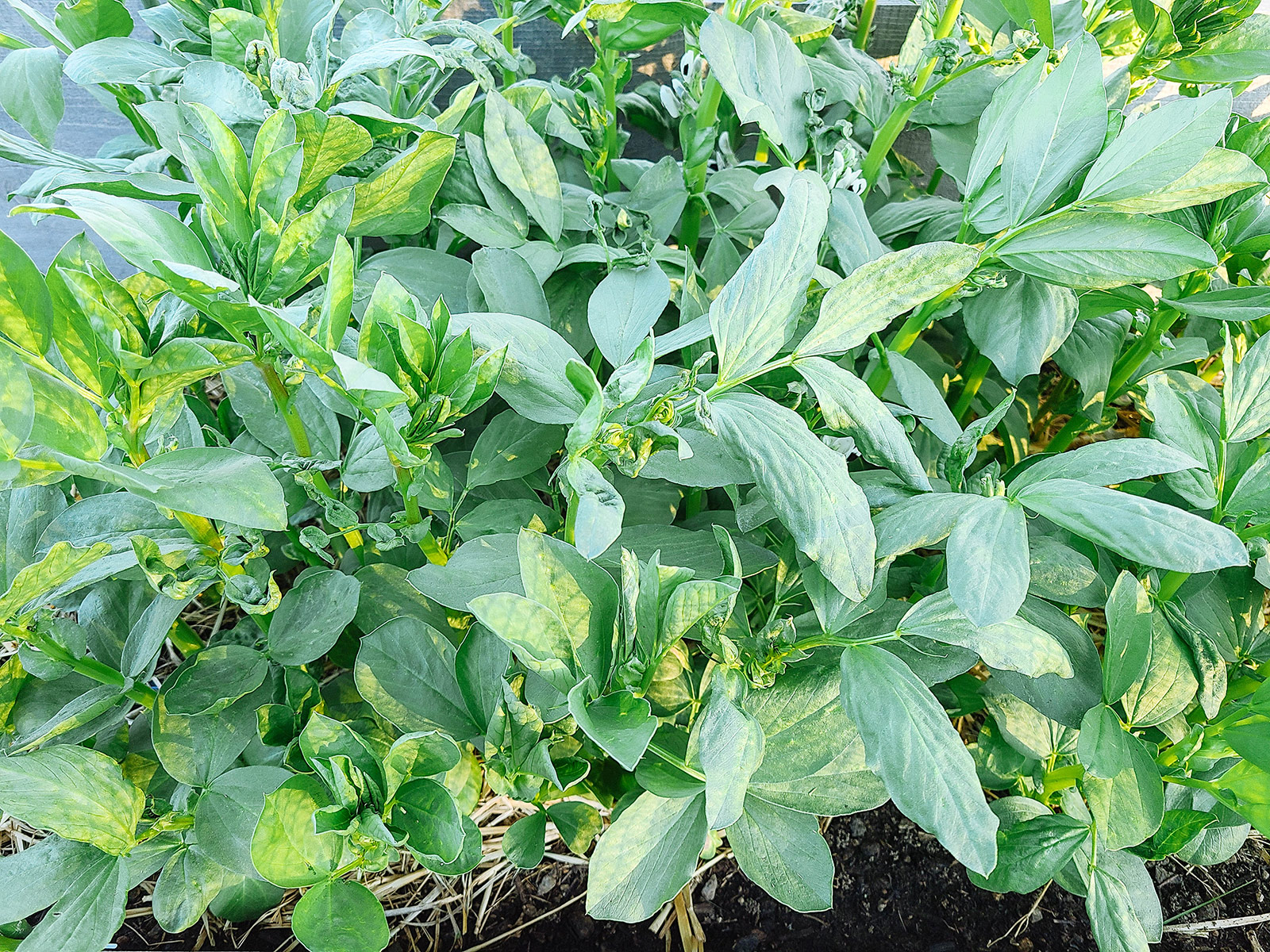
You’re going to see a lot of legumes on this list, because their natural nitrogen-fixing abilities cannot be beat. And a fava bean cover crop is right up there with the amount of nitrogen it can add to the soil! This hardy legume (able to withstand temperatures down to 10°F or 15°F) performs best if it’s inoculated with the correct bacteria.
Once they start growing, they produce abundant foliage with a silky texture and sweet, bean-y flavor. Fava leaves (and fava flowers) can be eaten raw or cooked, or even turned into pesto. Harvest them right up until the flowering stage, then incorporate the plants into the soil before they form beans.
It’s hard to find fava bean seeds in bulk for cover cropping, but a variation called bell beans or small favas (which are simply small-seeded fava beans) can be found through Peaceful Valley and Territorial Seed.
3. Cowpeas (Vigna unguiculata)
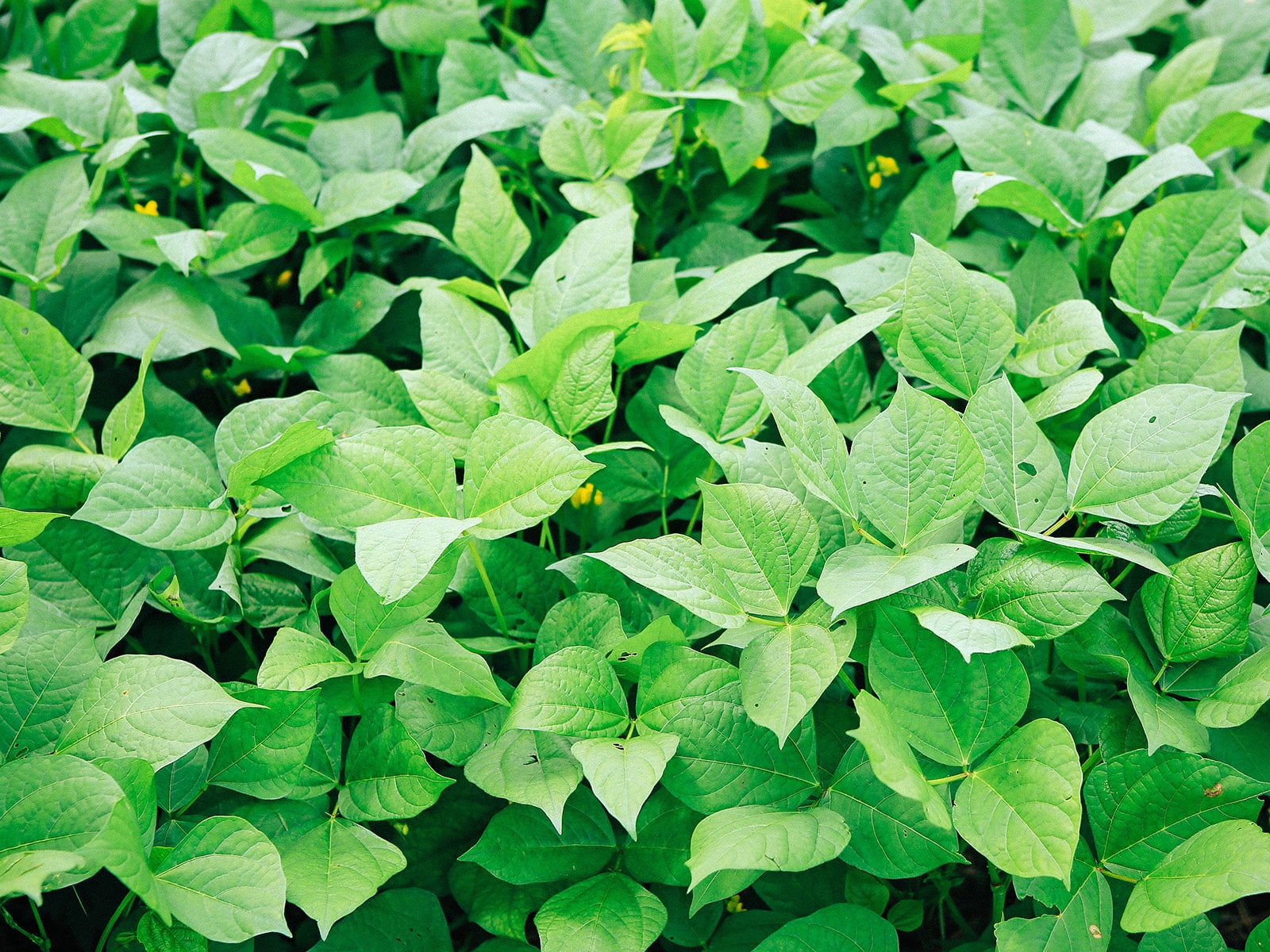
Also known as black-eyed peas, cowpeas are heat-tolerant, drought-resistant legumes that grow well in sandy soils and poor soils, making them an excellent option for people with challenging growing conditions. Cut them down when they start to flower. As the roots decompose in place, they’ll release their stored nitrogen into the soil for the next crop to use.
Cowpeas are highly productive plants with edible flowers and leaves (not to mention edible pods and beans). When picked young, the leaves are tender enough to eat raw and have a sweet, mild flavor. I also like them stir-fried or added to soup in the last few minutes of cooking.
4. Pigeon peas (Cajanus cajan)
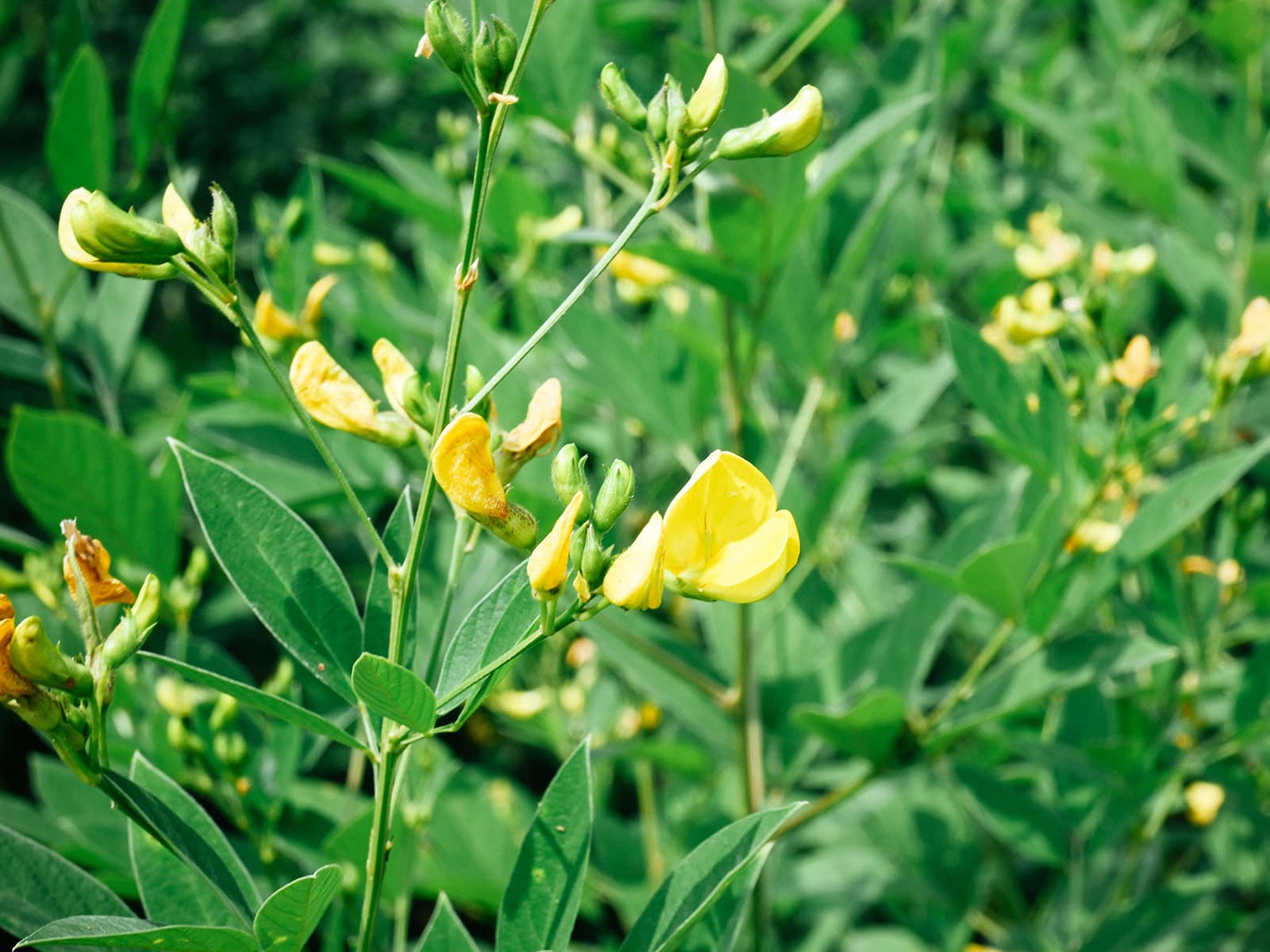
Pigeon peas are short-lived perennials in USDA zones 9 and above, but in colder climates, they can be grown as annuals. These low-maintenance plants can stretch several feet tall, love hot sunny days, and thrive on little water, so they’re well-suited to late spring plantings when other peas start to fade.
As a cover crop, pigeon peas produce quite a bit of organic matter (in addition to their nitrogen-fixing ability). They’re a long-season plant, typically maturing in 120 to 140 days, which means you have plenty of time to harvest their leaves before they develop pods.
I’d say it’s an acquired taste though; pigeon pea leaves, while completely edible, have a strong, sort of spicy flavor that’s very different from the peas themselves (which are rich and nutty).
5. Barley (Hordeum vulgare)
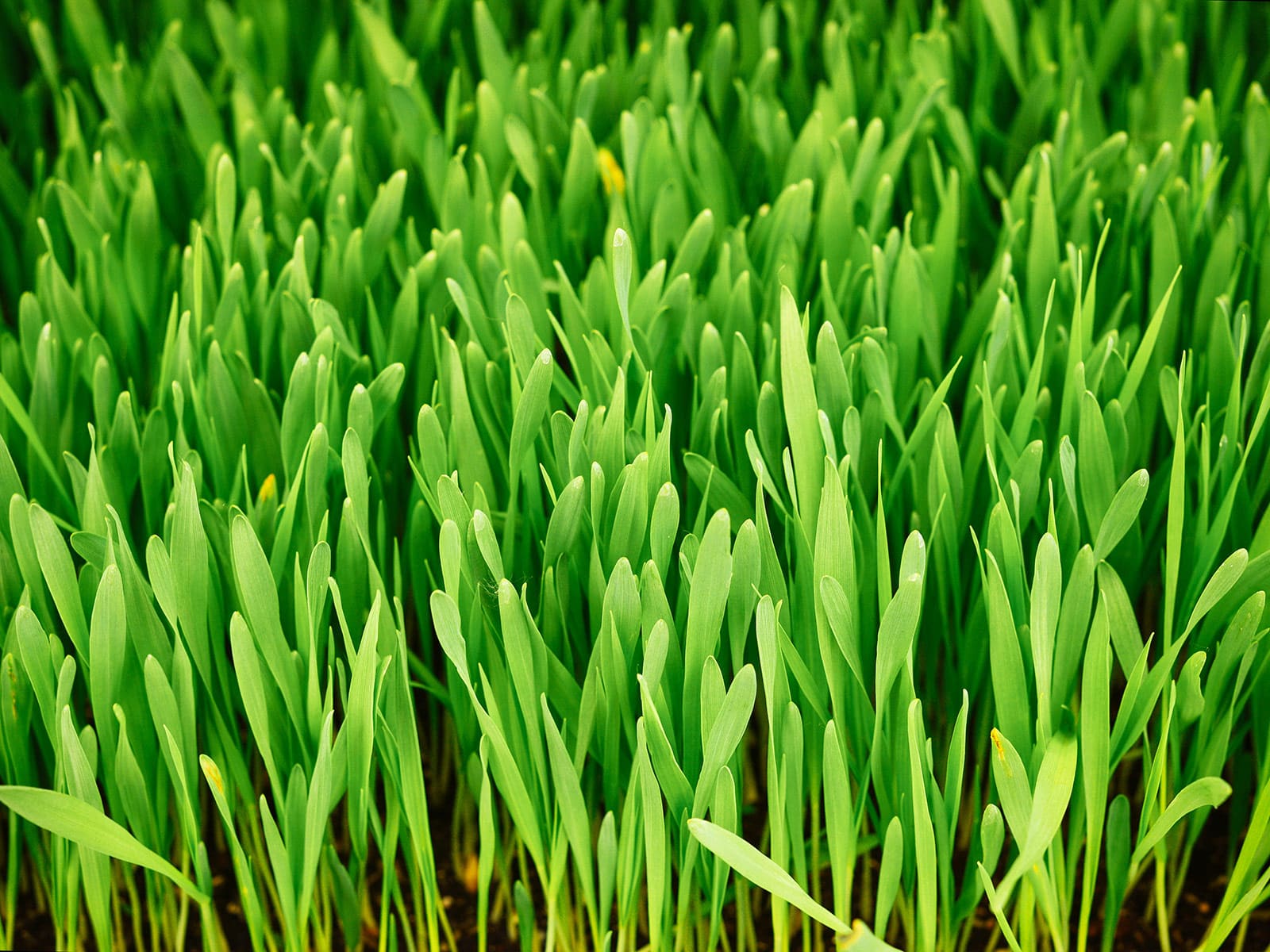
Barley is a cereal crop with soil-building benefits. It provides lots of green manure and its deep, fibrous roots help improve soil structure. Barley is also heat- and drought-tolerant. In USDA zones 8 and above, it overwinters if planted in fall. In colder climates, it’ll die back with the first freeze but can be left on the soil as mulch.
Young barley leaves are edible and can be tossed into a salad mix. You can also juice the leaves like wheatgrass, or take it a step further and dehydrate the juiced barley grass to create an antioxidant-rich powder (for adding to smoothies and other drinks).
6. Daikon radishes (Raphanus sativus)
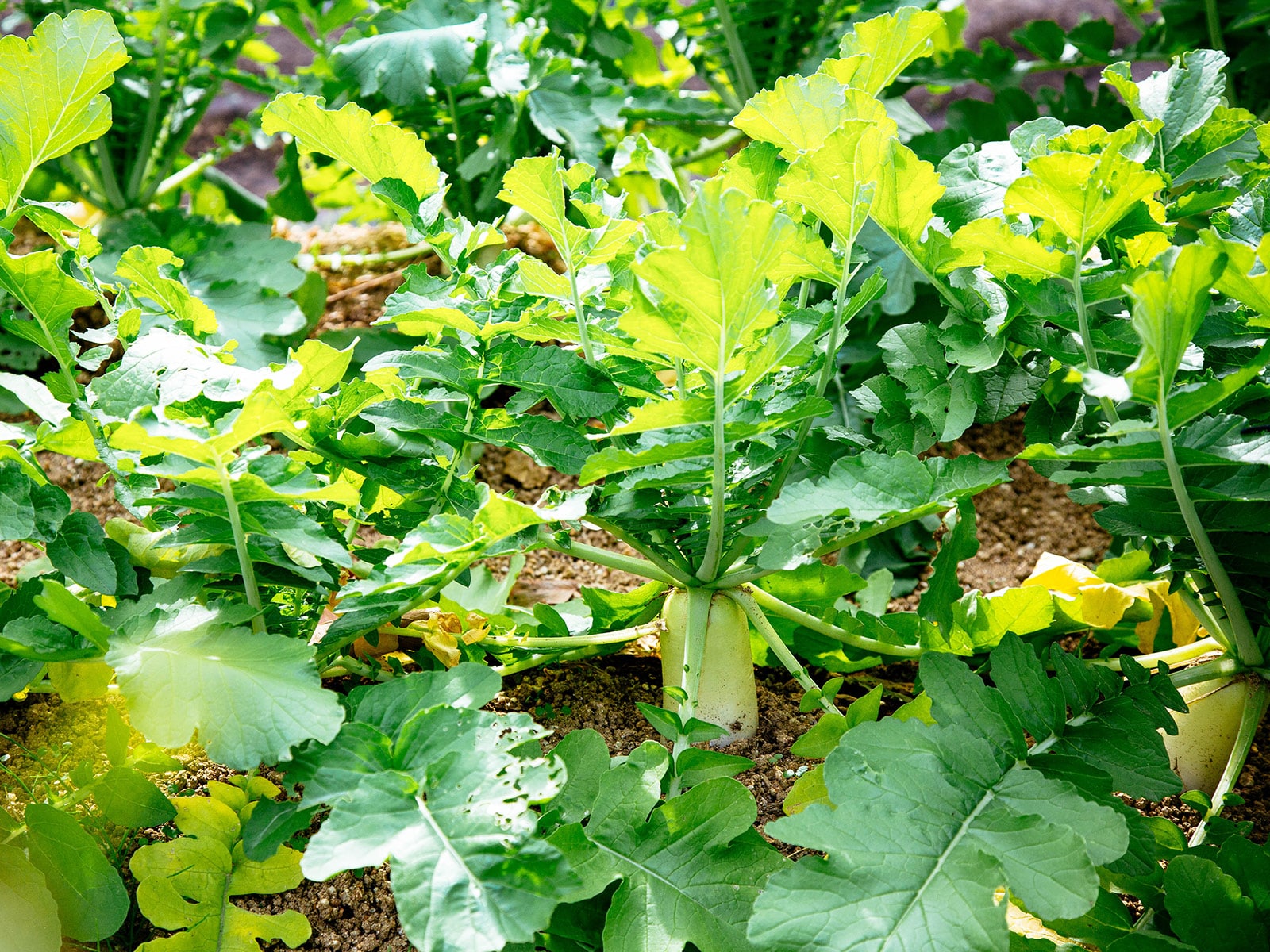
Daikon is a type of winter radish that you’ve probably heard of. What you might know, however, is that certain varieties of daikons were bred for tillage (hence the term tillage radishes).
As a cover crop, the extra thick, deep roots break up hard, compacted soil. Tillage radishes also scavenge any residual nitrogen left in the soil by the previous crop (so the nutrients won’t be washed away). Once the plants are cut down, they return the nitrogen to the soil for the next crop to use.
Daikons can survive lows of 20°F to 25°F, so if your winters are colder, expect them to die back (though you can leave the roots and leaves in place to decompose and build up your soil).
If you’ve never tried winter radish greens, you are in for a treat! The leaves are tender and mild, and I use them the same way I use chard. Young leaves can be eaten raw, while older (larger) leaves are delicious in soups, stews, and sautes.
While you can sow any type of daikon seed for cover, tillage radishes are ideal because they’re sold in bulk. (Outside Pride is my go-to supplier for this.)
7. Mustards (Brassica spp.)
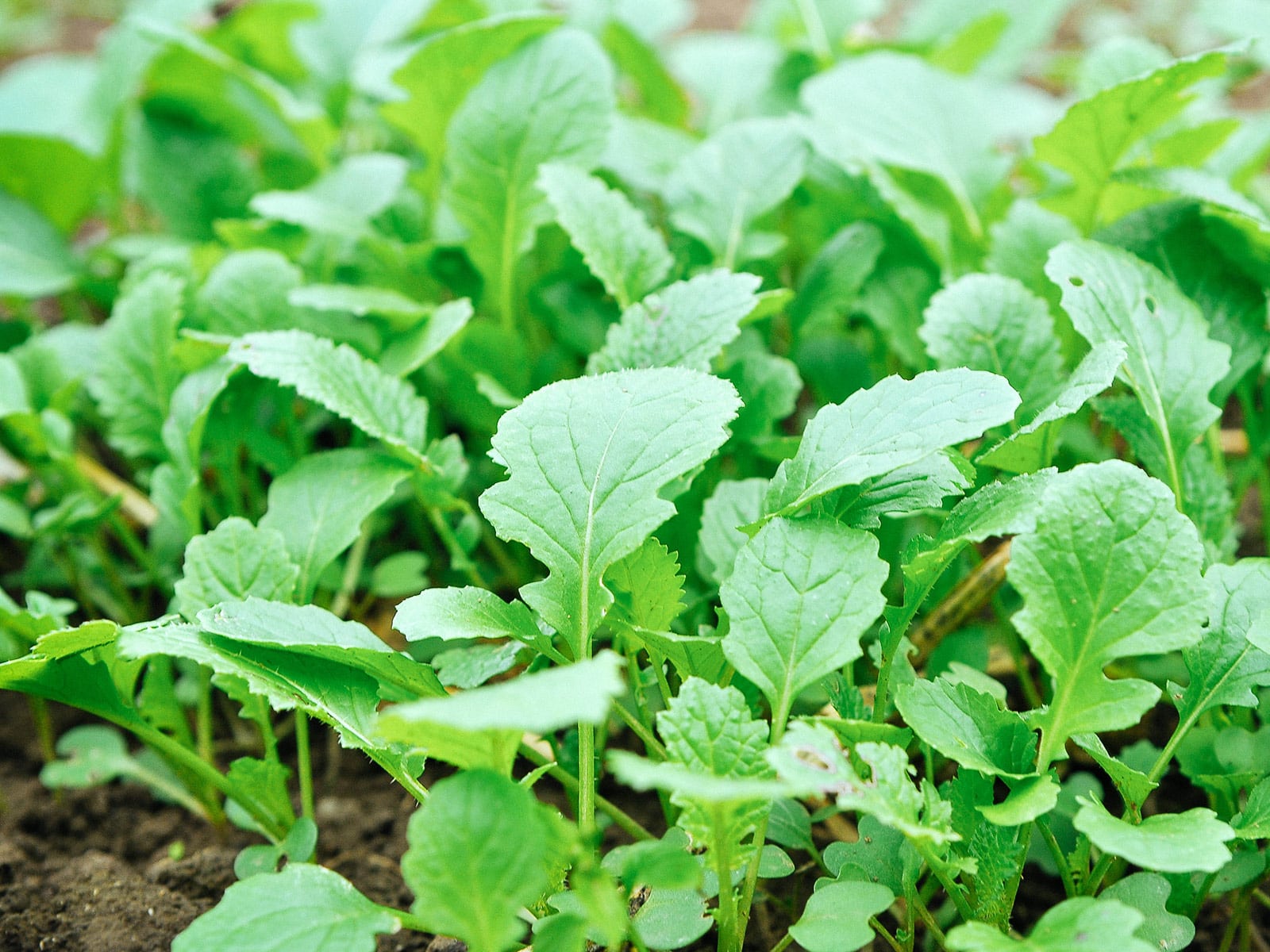
Mustard is a popular cover crop for its rapid growth, nutrient scavenging ability (particularly when there’s too much nitrogen in the soil), and biofumigant properties. While there are specific varieties used as cover crops (such as those that help control root-knot nematodes), you can actually use any mustard variety as cover.
Cut them down in spring or summer (before they go to seed) and incorporate them into the soil before you plant your next crop.
Common options include yellow mustard, Chinese mustard, arugula, kale, collards, and turnips—yes, you can mass broadcast all of these seeds as a cover crop! This is a good way to use up older brassica seeds too; just mix them all together and toss them over the soil.
You can eat the leafy greens on all brassicas, and depending on your climate, some of them will even overwinter (especially with a lightweight or midweight frost cloth for protection).


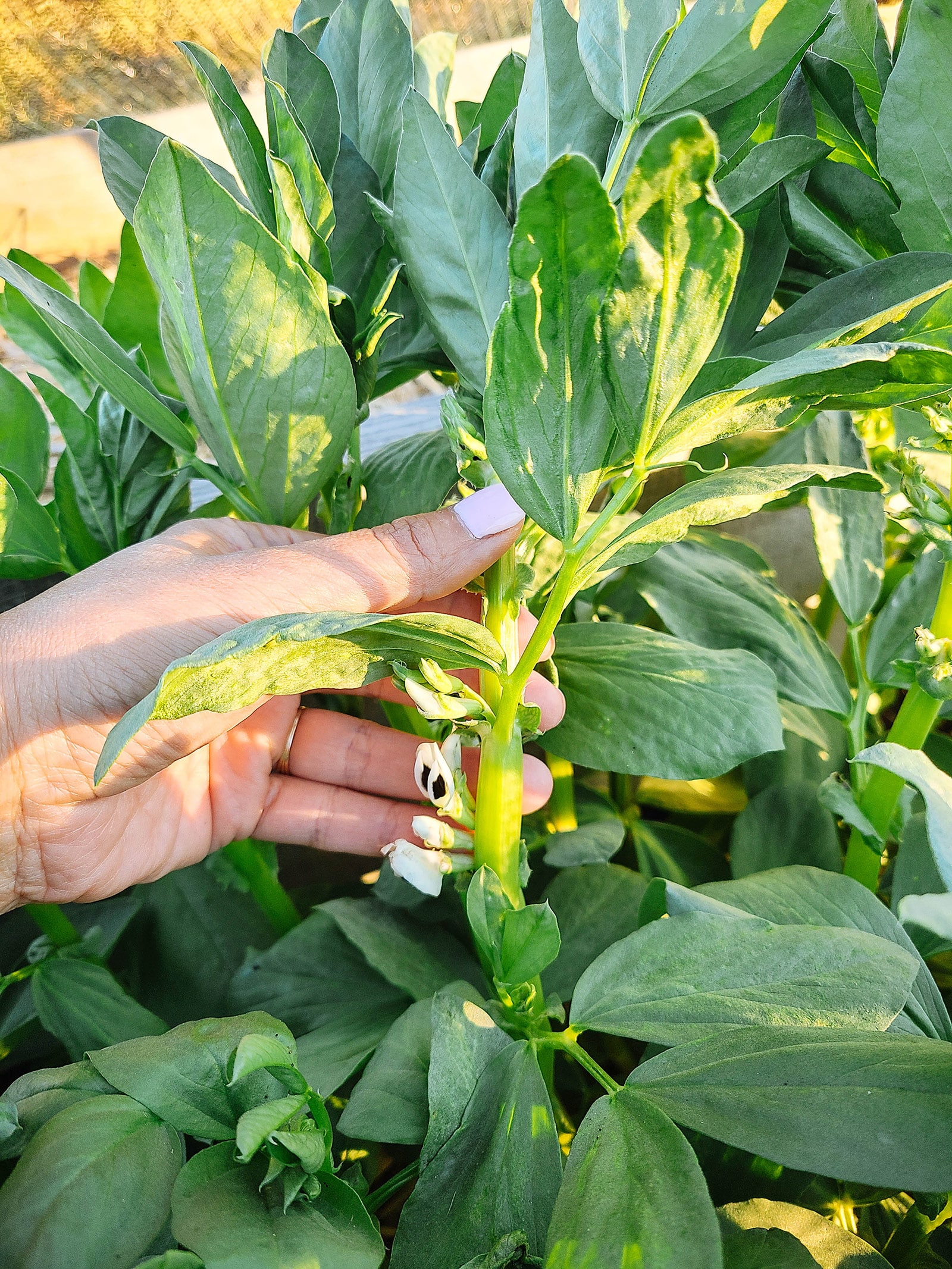
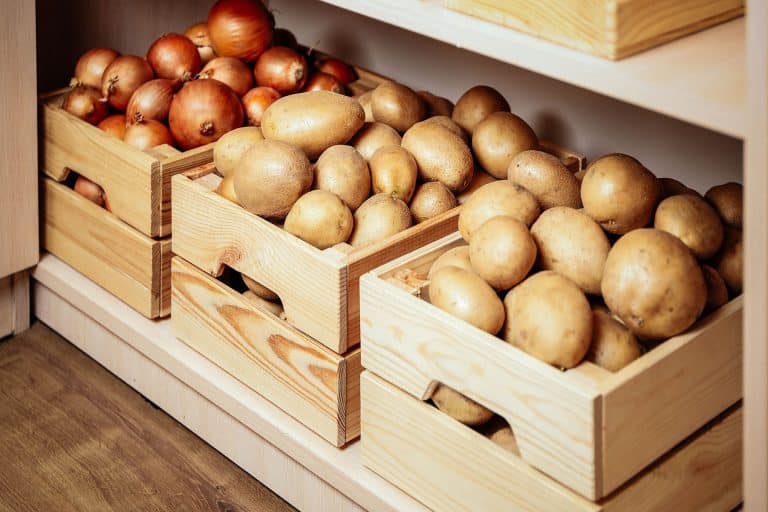
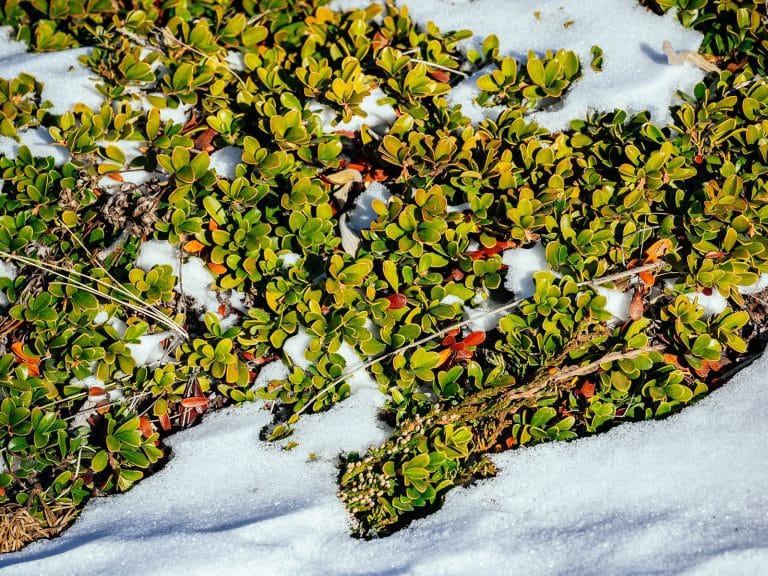
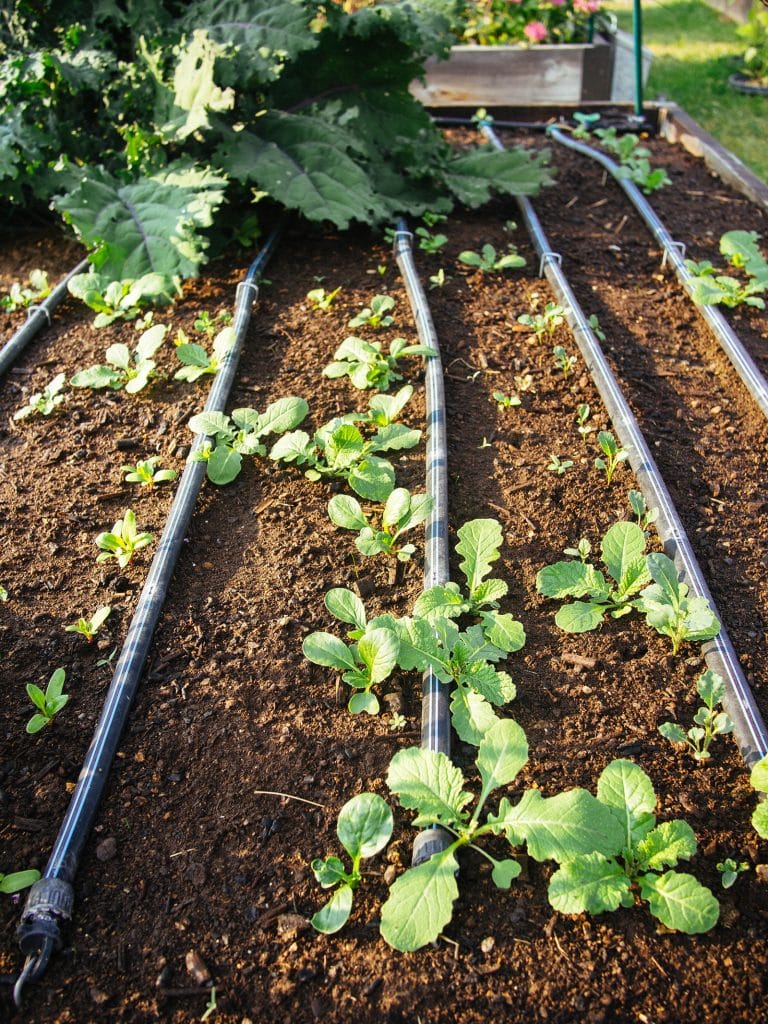
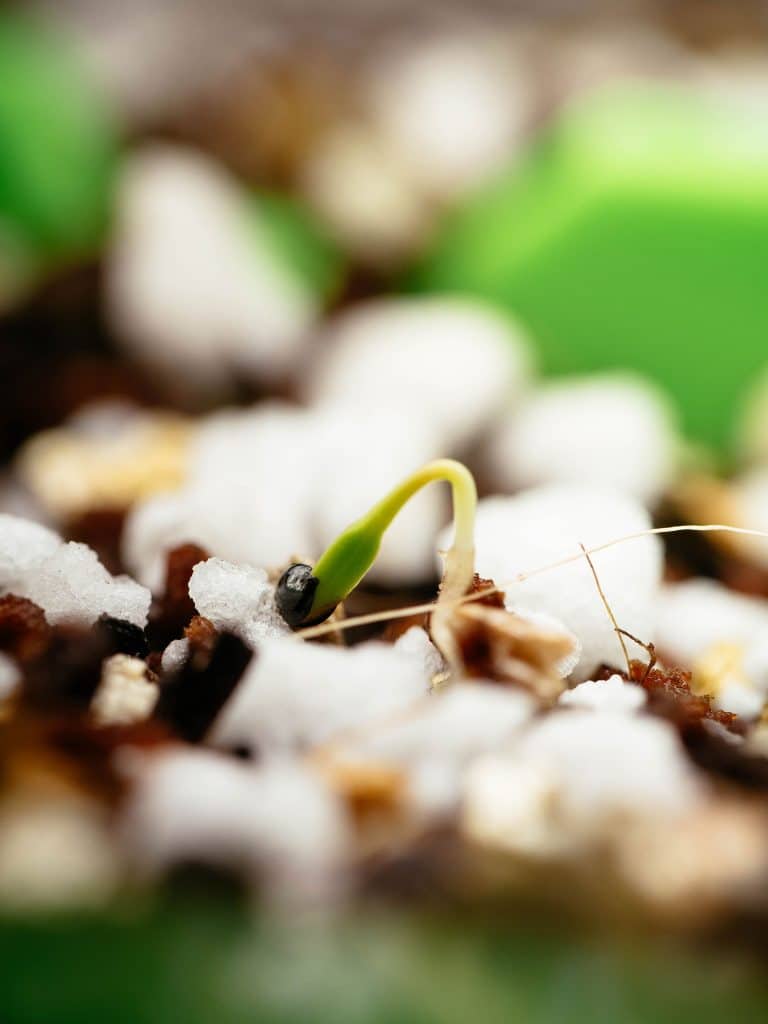









Hi Linda,
I was very taken by your article about perennial vegtable gardens. I have just moved to Las Vegas and have a wonderful new backyard. My question for you is a simple one… who can I order a selection of the of seeds or plants you discussed for my new garden?
Thanks so much.
Mary Ann, an admirer of your product.
Hi Linda,
Novice gardener here and I am confused on when you actually plant these cover crops. I live in a 5b zone in Northeastern New Brunswick and we can get rather cold winters so I’m thinking that nothing will overwinter but how close to the frost date is too late too sow them? I do like the idea of broadcasting “leftover” seeds so as my first trial I won’t have to purchase new seeds.
Thanks and I do enjoy your tips and tricks!
I’m in a zone 5 microclimate and will be sowing my cover crop seeds in the next week or so. I personally like Austrian winter peas because of how hardy they are, but you can definitely broadcast leftover mustard seeds now and then cover the bed with frost cloth to help the plants make it over winter. I usually don’t have a problem getting kale, collards, and a couple other mustards to overwinter this way, but this really depends on the variety and also how many hard freezes you have. Always worth a shot if you don’t want to buy new seeds the first time!
I was surprised that you did not mention winter rye. In the Northeast they are the commonest cover crop, producing a huge amount of biomass if planted early enough (e.g., between the rows of late corn.). Winter rye does not commonly winter kill here, and some plants usually escape tillage. At the garden scale, it is easy enough to pull them & turn them upside down to die.
BTW. In North Central Florida, summer was our fallow season. Weeds grew almost fast enough to watch, so we set up a fence around one garden next to the chicken coop and the chickens suppressed the weeds, getting free food in the process. Of course there were warm weather crops such as okra, eggplant, peppers, lima beans, cowpeas that we grew in other gardens. With climate change, we were establishing perennial tropical & subtropical leaf crops when a medical mess forced us to move to VT where we had family support.
Yes, winter rye is edible, and I did grow winter rye last year as a cover crop. Do you have suggestions for eating or preparing the grass? I’m only familiar with eating rye berries, but by the time those are available, the cover crop would’ve been turned in to the soil already.
I have never tried eating it. My first try would be to dry it in our food dryer and then pulverize it as a green supplement to soups, stir fries, meat loafs, etc. If you have small stock such as rabbits & chickens, they will eat rye though I would not make it their sole food, even for a short time. Geese would love it, but I have concerns about letting them in the garden at any time of year. Animals can be efficient processors of foods our digestive system won’t tolerate or we choose not to eat. Rabbits grind leaves with their teeth and chickens do an even better job with their gizzards. When I was homesteading I would let poultry into the garden after harvest or fence (electric) feeder pigs there to not only clean up weeds and crop residue, but also to control pests. It is an alternative to cover cropping–each approach has advantages and disadvantages.